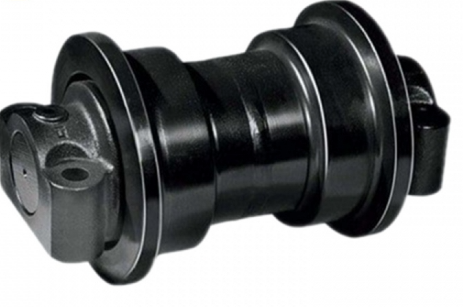
The Ultimate Guide to the 200104-00004A Track Roller
The 200104-00004A track roller is a key component in various heavy machinery, playing a crucial role in their functionality and efficiency. This guide provides in-depth information about its features, applications, installation, maintenance, and common issues.
1. Overview of the 200104-00004A Track Roller
Key Features
- Durable Construction: Designed to withstand heavy loads and harsh operating conditions.
- Sealed Bearings: Protects the internal components from dirt and moisture, extending the lifespan.
- Compatibility: Suitable for a wide range of tracked machinery.
Specifications
- Weight: Approximately XX lbs (replace with actual value).
- Dimensions: XX inches in diameter and XX inches in width (replace with actual values).
- Material: Made from high-strength steel with rust-resistant coatings.
2. Applications
The 200104-00004A track roller is commonly used in:
- Excavators
- Bulldozers
- Tracked Loaders
- Crawler Cranes
- Other Heavy Equipment
3. Installation Process
Preparation
Tools Required
- Socket set
- Torque wrench
- Alignment tools
- Lubricating grease
- Personal Protective Equipment (PPE)
Installation Steps
- Power Down the Equipment:
- Ensure the machinery is completely turned off and secured.
- Remove the Old Track Roller:
- Unscrew and detach the existing roller with the socket set.
- Inspect Surrounding Components:
- Check the track and adjacent components for wear and damages.
- Install the New Track Roller:
- Position the 200104-00004A track roller correctly.
- Secure with bolts and tighten them to the manufacturer’s torque specifications.
- Alignment Check:
- Use alignment tools to ensure the proper positioning of the roller.
4. Operating Guidelines
Pre-Operation Checks
- Conduct daily inspections to identify any visible damage or excessive wear.
- Confirm that adequate lubrication is applied to the bearings.
During Operation
- Load Management: Operate within the recommended load limits to prevent overloading.
- Terrain Navigation: Exercise caution on uneven surfaces to avoid additional stress on the roller.
5. Maintenance Practices
Routine Maintenance
- Daily Inspections: Check for dirt, debris, and signs of wear on the track roller.
- Regular Lubrication: Lubricate the bearings as per manufacturer recommendations.
Periodic Maintenance
- Weekly/Monthly Checks:
- Inspect track tension and adjust as needed.
- Review surrounding components for wear or damage.
- Documentation: Keep detailed records of inspections and maintenance activities.
6. Troubleshooting Common Issues
Identifying Problems
- Excessive Wear:
- Check alignment and ensure the correct track tension.
- Noisy Operation:
- Verify lubrication levels and inspect bearings for any damage.
- Track Slippage:
- Ensure the track roller is functioning properly and adjust track tension accordingly.
7. Best Practices for Longevity
- Use OEM Parts: Always choose Original Equipment Manufacturer parts for quality assurance.
- Operator Training: Provide training for operators on safe handling and maintenance techniques.
- Safe Operating Procedures: Encourage careful driving to reduce stress on machinery components.
8. Conclusion
The 200104-00004A track roller is essential for the smooth operation of tracked machinery. By understanding its features, following proper installation and maintenance procedures, and employing best practices, you can significantly enhance its performance and lifespan. If you have any further questions or need assistance, feel free to ask!